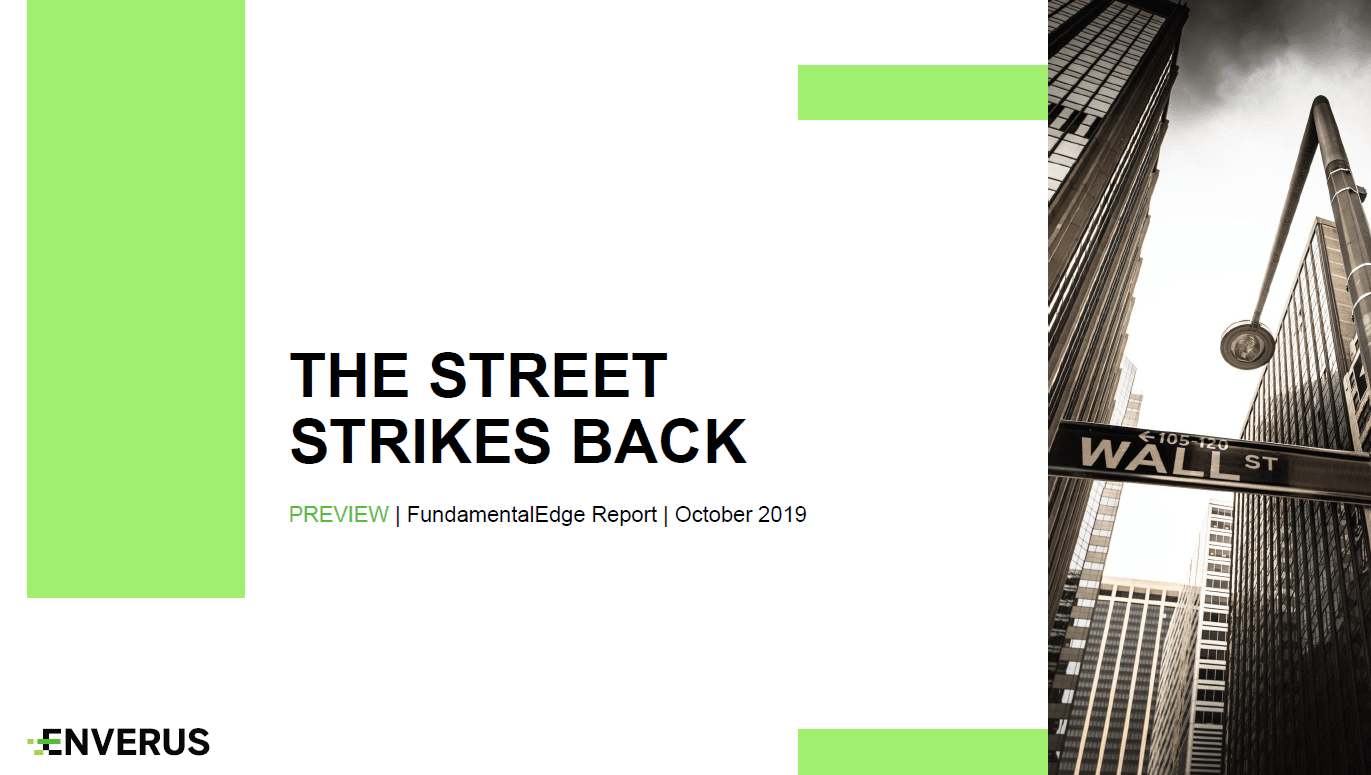Austin, TX – Enverus, the leading oil and gas SaaS and data analytics company, has released The Street Strikes Back, a new report in its FundamentalEdge series focused on geopolitical and domestic impacts affecting the oil, natural gas, and NGL markets.
“Global incidents like the attack on Saudi oil facilities that used to send lasting ripples across the world and disproportionately harm the United States are now being dismissed,” said Bernadette Johnson, Vice President of Strategic Analytics at Enverus. “What used to trigger a major buy or sell in crude oil, or cause prices at the pump to skyrocket, are being shrugged off by the markets in a day,” she said. “Absorbing most of that impact is the Permian basin, which has since jumped to 40% of total U.S. oil production, but capacity and bottlenecks continue to be a major problem there. The good news is relief is on its way with several planned pipelines expected to come online soon,” she said.
“America’s energy story isn’t just about crude oil,” Johnson added. “Liquefied natural gas (LNG) exports set a record high during the summer of 2019, and our projections indicate they could nearly double from 5.0 Bcf/d to 9.0 Bcf/d by 2023. However, trade wars could certainly alter that anticipated future.”
“Also, Wall Street continues to keep a watchful eye on capital plans. This shift to generating free cash flow is reaching an inflection point for many, and with that brings reduced activity. Operators want to ensure positive cash flows exceed expenditures, which brings them one step closer to returning cash to shareholders or reducing debt,” Johnson said.
Enverus’ The Street Strikes Back is the 4Q2019 installment of its FundamentalEdge series. This market outlook service presents the company’s current view of the oil, natural gas, and NGL markets and where they are headed over the next five years.
Key Takeaways from the Report:
- Crude markets found a brief moment of support after news broke of the September 14th attack on key Saudi oil facilities, with front month ICE Brent contracts rallying ~15% on the first trading day after the event. Backwardation in the Brent structure also briefly strengthened to more than $1.30/bbl in the prompt as it was announced that Saudi Aramco planned to fill the gap in its output by drawing down on inventories (much of which are held outside the kingdom). Markets have since shrugged off the attack’s impact on Saudi spare production capacity; prompt Brent futures are trading close to levels seen immediately before the attack, and the front spread has eased off of recent highs. Even with the steep production losses from Venezuela and Iran this year, physical markets remain well supplied. Preliminary data imply global petroleum stocks drew in the third quarter and stocks are expected to draw again in the fourth, but large supply/demand imbalances are in our outlook for early 2020 as total petroleum demand continues to soften and non-OPEC production ramps up further. Although U.S. tight oil production growth is ostensibly slowing with WTI trading in the mid-50s, production growth in Brazil and Norway will augment U.S. supplies and push non-OPEC crude and condensate production growth to 2 MM Bbl/d next year.
- There were many developments in the natural gas market over the past months including the start of the first greenfield takeaway pipeline in the Permian, LNG exports set a record high during the summer, the start of a new pipeline export to Mexico, and strong production growth in the Marcellus and Haynesville. In 2019, supply gains have outpaced demand, causing natural gas prices to lose more than $1.00 per MMBtu, from $3.64 settlement in January to $2.43 in October. Enverus experts expect the price weakness to continue in 2020 with an average $2.60 per MMBtu. After 2020, prices are expected to return to $2.75 per MMBtu in order to allow natural gas production to grow at a rate that meets the expected demand growth.
- During 2019, ethane and LPG prices have been depressed, mainly due to record or near-record levels of production and inventories. A slew of fractionation capacity is set to come online in the first quarter of 2020. However, recent storms and flooding along the Texas Gulf Coast near Mont Belvieu may delay some of these projects, possibly extending fractionation tightness along the Gulf Coast as y-grade production continues to increase, particularly out of PADD 3 and the Permian.
Operators were shown no mercy in Q2’19 earnings season. Infrastructure constraints and spacing issues caused sell-offs, while shareholder returns and free cash flow surprises continue to drive the gains. Most small to mid-sized operators are sticking to front half weighted capex programs, but lower prices did little to cause revisions to D&C plans for the remainder of the year.
 Loading...
Loading...
Oil and gas operations are commonly found in remote locations far from company headquarters. Now, it's possible to monitor pump operations, collate and analyze seismic data, and track employees around the world from almost anywhere. Whether employees are in the office or in the field, the internet and related applications enable a greater multidirectional flow of information – and control – than ever before.











